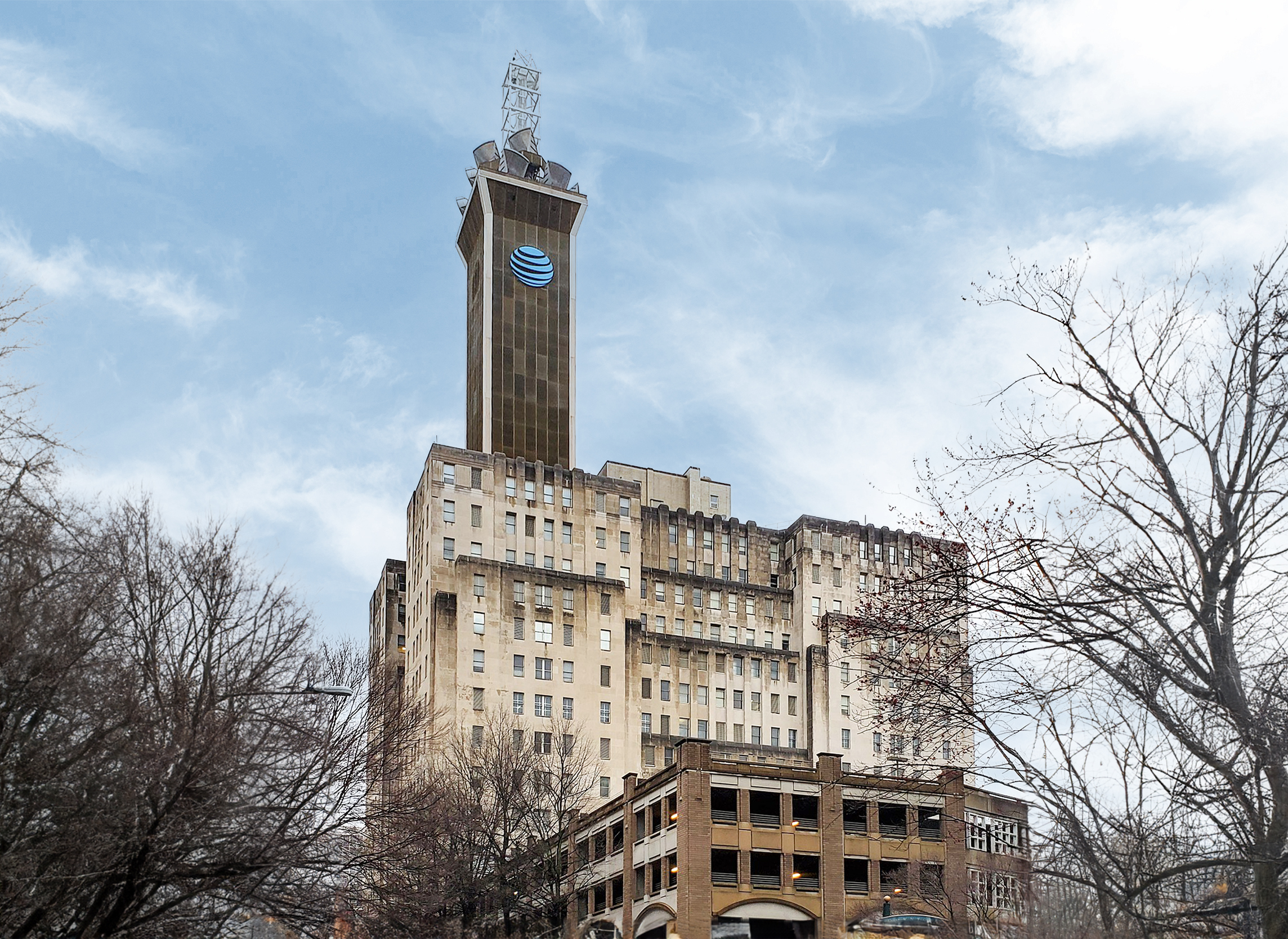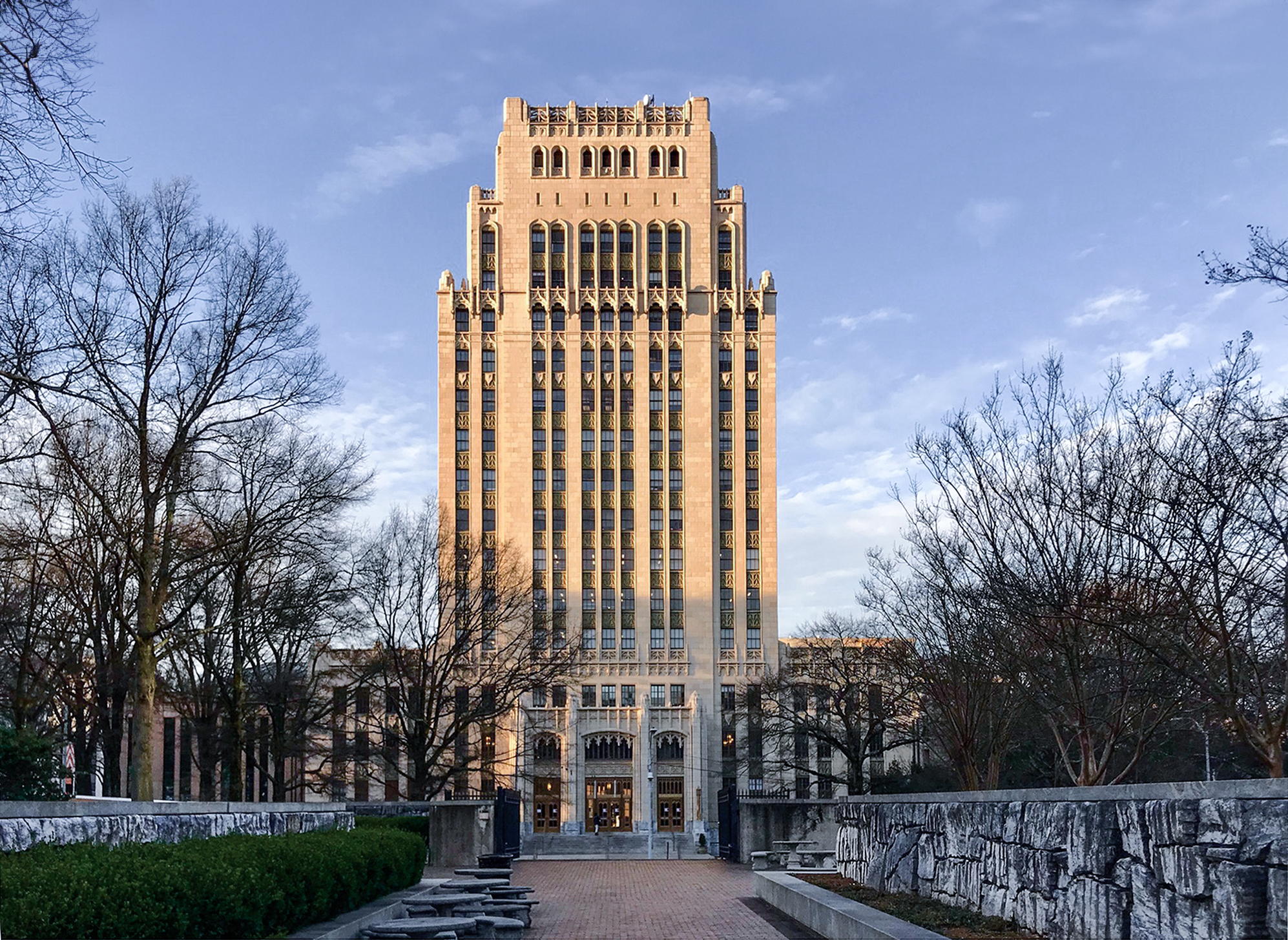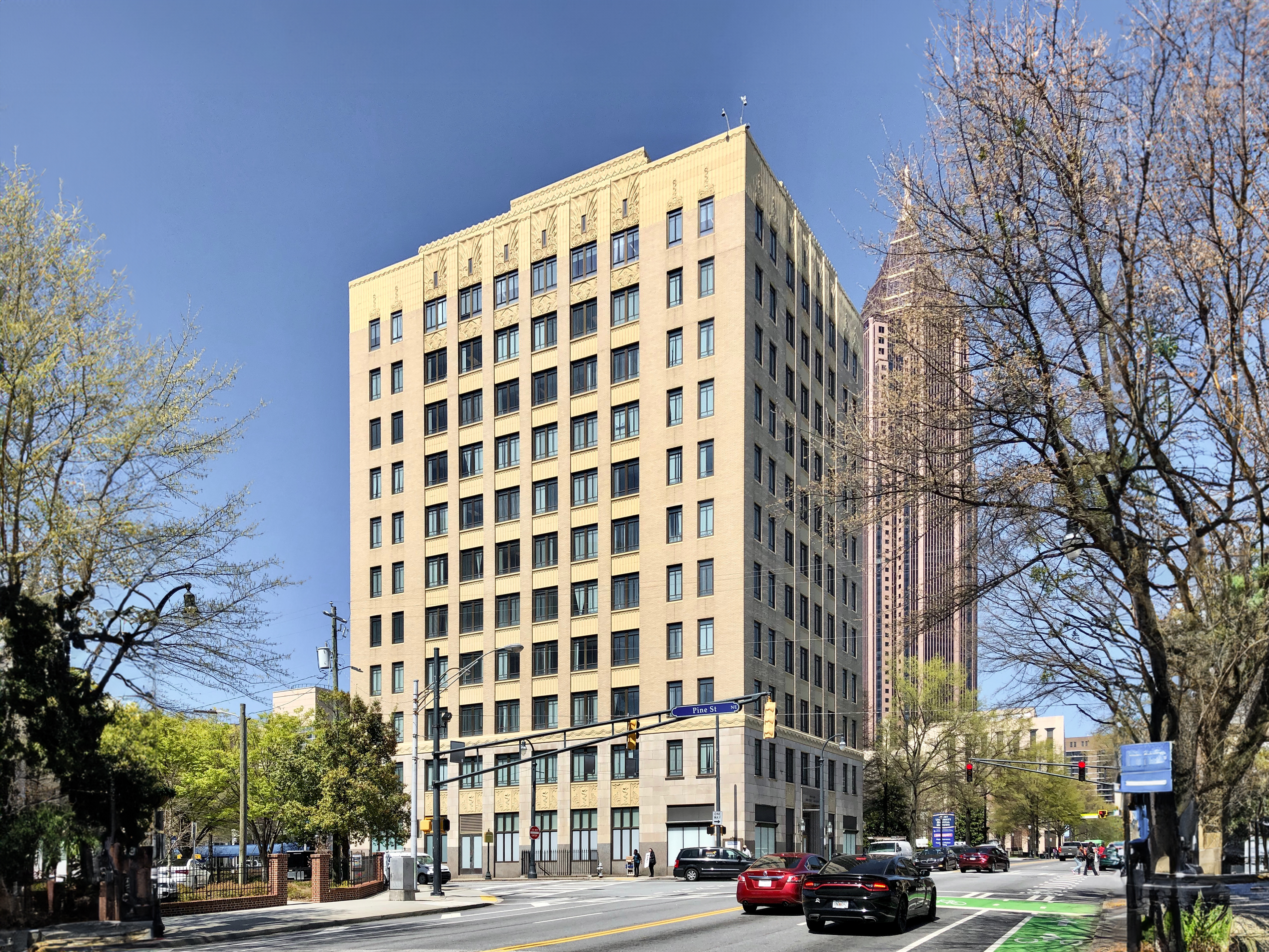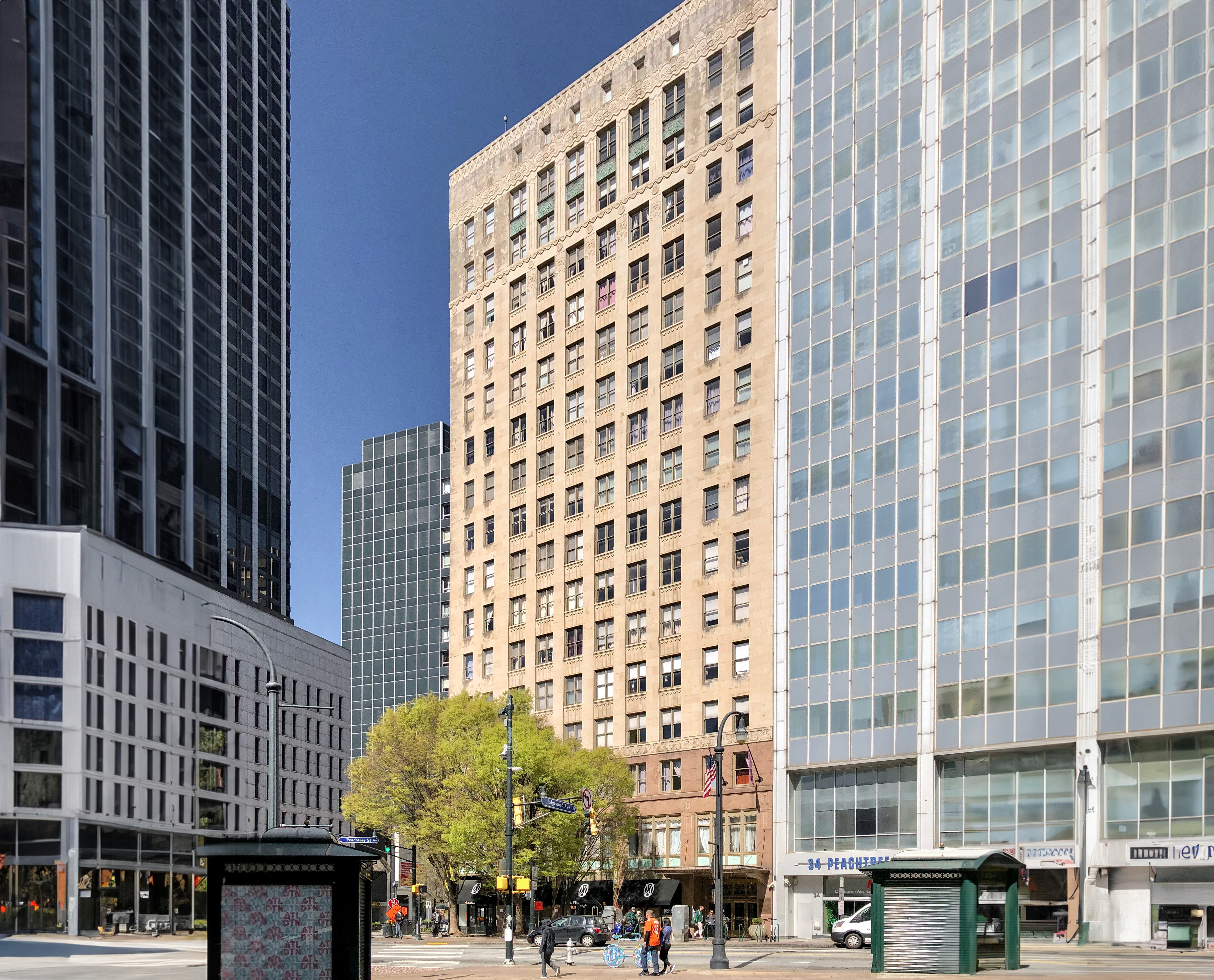The Southern Bell Telephone Company Building is an Art-deco skyscraper designed by Marye, Alger and Vinour, and built in 1929 in Atlanta, GA.
Southern Bell Telephone Company Building is not the only name you might know this building by though. The building is, or has also been known as AT&T Communications Building.
Its precise street address is 51 Peachtree Center Avenue, Atlanta, GA. You can also find it on the map here.
The Southern Bell Telephone Company Building is a structure of significant importance both for the city of Atlanta and the United States as a nation. The building embodies the distinctive characteristic features of the time in which it was built and the Art Deco style. Because of that, the Southern Bell Telephone Company Building was officially included in the National Register of Historic Places on June 6th 1978.
The building has been restored 2 times over the years to ensure its conservation and adaptation to the pass of time. The main restoration works happened in 1948 and 1963.






